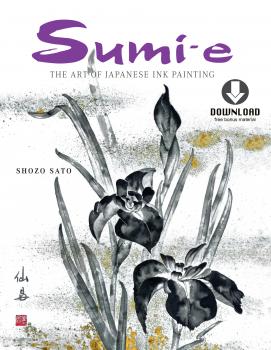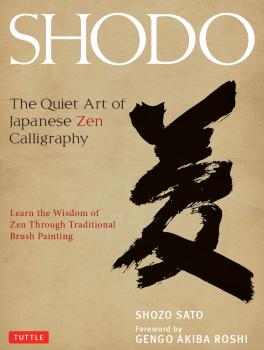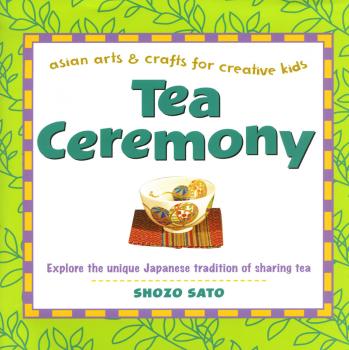ТОП просматриваемых книг сайта:















Shozo Sato
Список книг автора Shozo SatoАннотация
In this Japanese ink painting book renowned Japanese master Shozo Sato offers his own personal teaching on the beautiful art of sumi-e painting. Sumi-e: The Art of Japanese Ink Painting provides step-by-step, photo-by-photo instructions to guide learners in the correct form, motions and techniques of Japanese sumi-e painting.Featuring gorgeous images and practical advice, it includes guided instructions for 35 different paintings. From waterfalls to bamboo, learners paint their way to understanding sumi-e—a style of painting that is characteristically Asian and has been practiced for well over 1,000 years. Although it's sometimes confused with calligraphy, as the tools used are the same, sumi-e instead tries to capture the essence of an object or scene in the fewest possible strokes.This all-in-one resource also provides a timeline of brush painting history, a glossary of terms, a guide to sources and an index—making it a tool to use and treasure, for amateurs and professionals alike. This sumi-e introduction is ideal for anyone with a love of Japanese art or the desire to learn to paint in a classic Asian style.
Аннотация
In this beautiful and extraordinary zen calligraphy book, Shozo Sato, an internationally recognized master of traditional Zen arts, teaches the art of Japanese calligraphy through the power and wisdom of Zen poetry. Single-line Zen Buddhist koan aphorisms, or zengo , are one of the most common subjects for the traditional Japanese brush calligraphy known as shodo . Regarded as one of the key disciplines in fostering the focused, meditative state of mind so essential to Zen, shodo calligraphy is practiced regularly by all students of Zen Buddhism in Japan. After providing a brief history of Japanese calligraphy and its close relationship with the teachings of Zen Buddhism, Sato explains the basic supplies and fundamental brushstroke skills that you'll need. He goes on to present thirty zengo , each featuring:An example by a skilled Zen monk or master calligrapherAn explanation of the individual characters and the Zen koan as a wholeStep-by-step instructions on how to paint the phrase in a number of styles (Kaisho, Gyosho, Sosho)A stunning volume on the intersection of Japanese aesthetics and Zen Buddhist thought, Shodo: The Quiet Art of Japanese Zen Calligraphy guides beginning and advanced students alike to a deeper understanding of the unique brush painting art form of shodo calligraphy. Shodo calligraphy topics include: The Art of Kanji The Four Treasures of Shodo Ideogram Zengo Students of Shodo
Аннотация
Explore one of Japan's most beautiful traditions while entertaining your family and friends! Tea Ceremony: Explore the unique Japanese tradition of sharing tea is an exciting and fun way to introduce Asian culture to kids. Readers will learn all the steps for performing a Traditional Japanese Tea Ceremony. With this book kids will be able to: Perform the Traditional Japanese Tea Ceremony at home through easy-to-follow instructions Explore all the elements of an authentic Japanese tea ceremony, including the tea utensils such as the scoop, whisk, bowl, and fukasa (silk cloth used for cleaning utensils) Know the proper technique for whipping tea, and the different kinds of tea usedThe Asian Arts & Crafts for Creative Kids series is the first series, aimed at readers ages 7-12, that provides a fun and educational introduction to Asian culture and art. Through hands-on projects, readers will explore each art—engaging in activities to gain a better understanding of each form.
Ikebana: Asian Arts and Crafts for Creative Kids - Shozo Sato
Asian Arts And Crafts For Creative KidsАннотация
Using colorful illustrations this multicultural children's book introduces readers to Japanese Ikebana.Ikebana, the ancient Japanese art of flower arranging, has never been easier—or more fun! This colorful, easy–to–follow guide will walk you through the steps of 10 different ikebana projects. Before you know it you'll be creating your very own unique and beautiful flower arrangements. Creating flower arrangements is a great way to explore this time-honored Japanese art form.Following the step–by–step instructions, you'll learn to arrange how to create:Kenzan Moribana—a basic style using a low, open containerNageire Ikebana—formal arrangements that balance length and weightSuiban (Water Platter) Ikebana—the earliest form of Ikebana, using a shallow platter filled with waterNatural Style Ikebana—arrangements that imitate natureOnce you've created your own arrangements, you can display them or give them as gifts, sharing a part of nature—and your creativity—with the people around you.About the Series:The Asian Arts & Crafts for Creative Kids series is the first series, aimed at readers ages 7-12, that provides a fun and educational introduction to Asian culture and art. Through hands on projects readers will explore each art—engaging in activities to gain a better understanding of each form.




